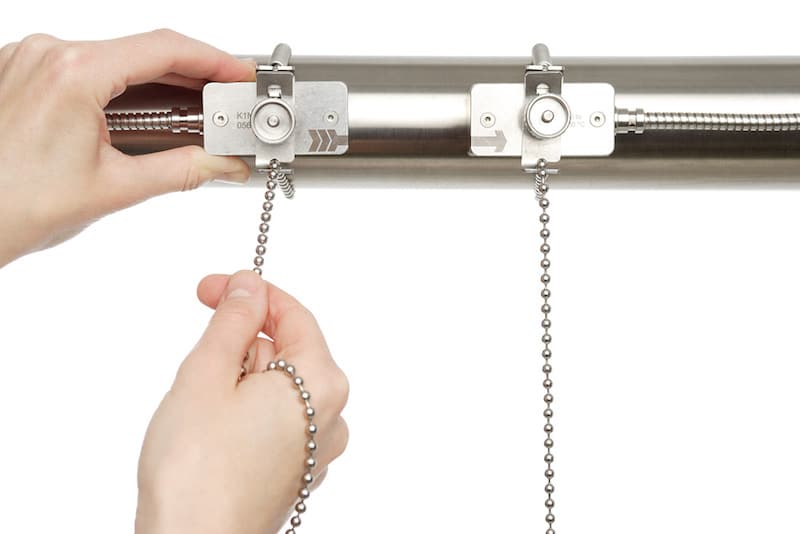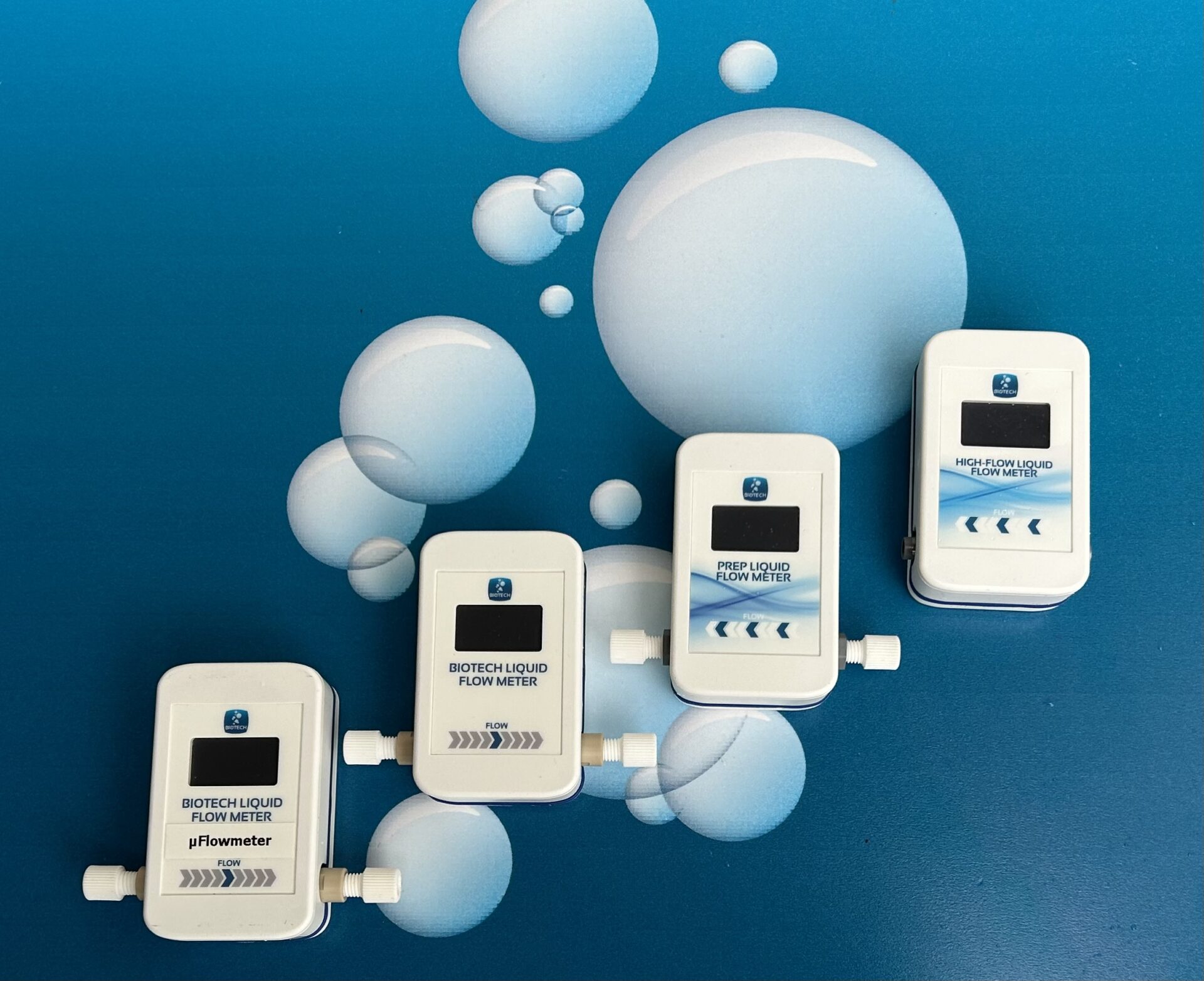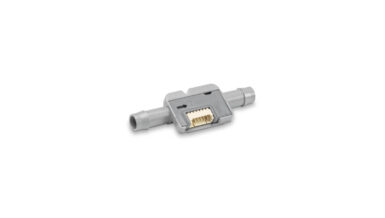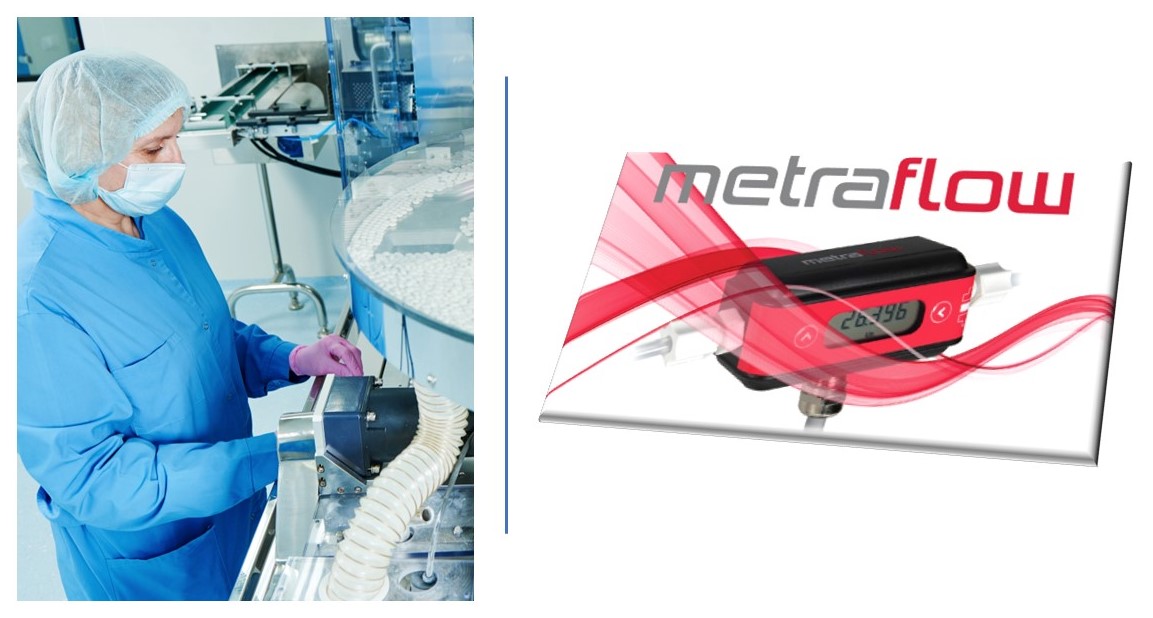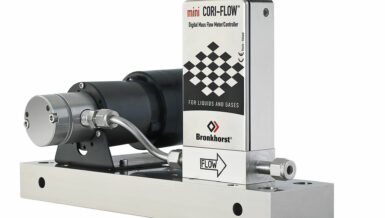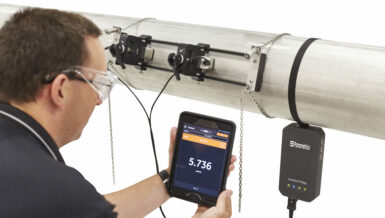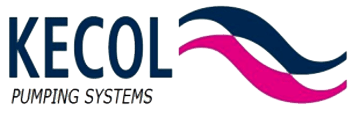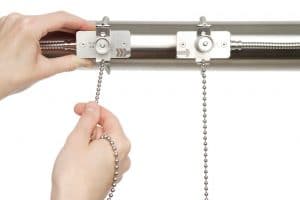
external surface of the pipe guarantees no contact with the fluid and therefore complete sterility.
So, challenged with flow measurement within a pipe, particularly an existing pipe, what issues does the site engineer face? Key, obviously, is identifying a technology that will work. As the purity of the fluid increases, often the conductivity decreases, so technologies such as electromagnetic flow metering will not always work. Then there is the interruption to production and the difficulties of reestablishing the sterile conditions required to re-commence operations. Invasive flow measurement instruments can even provide sites for microbial and algal growth to flourish. Non-invasive, clamp-on flow measurement using ultrasonic techniques provides a method to measure reliably and repeatability without interrupting the process and without compromising the sterility of the pipe.
How does non-invasive clamp-on measurement work?
Regardless of whether the flowmeter is fixed to a wall or is a portable, battery-powered unit, flow is sensed by a pair of compact, IP 68 rated stainless steel transducers, which are fixed to the outside of the pipe by clamps or chains. These transducers pass an ultrasonic signal through the pipe walls and the liquid, with the ultrasonic pulses travelling both with and against the direction of flow. Each transducer sends and receives the ultrasonic ‘echoes’ that return through the liquid that are then analysed within the flowmeter. Advanced signal analysis compares the signal in each direction and calculates the flow velocity, the resulting measurement being displayed on the integral screen and transmitted via either analogue or digital signals.
An easy way to think of the way ‘transit time’ measurement works is to imagine a rowing boat on a river. If the boat is rowed a known distance downstream and then back upstream, the time required differs. The difference between the upstream and downstream time varies in proportion to the speed of the river flow. In the same way the ultrasonic pulses are both emitted and detected by the pair of transducers a known distance apart, so reflections from the inside of the pipe are affected by the flow rate and so are measured both ‘upstream’ and ‘downstream’.

operation for permanent measurements.
Particularly on a small pipe, the difference between upstream and downstream times can be a matter of nanoseconds, so the flowmeter system considers a number of reflections, or ‘passes’ to increase the confidence in the measurement. The flowmeter analyses the reflected ultrasonic pulses, taking into consideration the effect the pipe material has on the flow, together with compensation for the velocity profile of the liquid medium.
The installation is very straightforward although, as with any instrument, there are certain guidelines that lead to an optimum result. The key is to have as smooth a flow as possible within the pipe at the point at which the measurement is made, and there are guidelines for things like; distance from a pipe bend, or from a flange or pipe connection, all of which can disturb the flow. A good, modern clamp-on flowmeter will also have built-in tools that help to optimise the installation, maximising the signal strength and giving dynamic feedback to make sure that the transducers are accurately positioned on the pipe.
The flowmeter is making a direct measurement of flow velocity which is then converted, based on the set up of the unit, into any other flow parameter required within the process, typically litres per second. Measurable flow rates range from 0.01 metres per second all the way up to 25 metres per second.
Typical Applications
Broadly speaking, a non-invasive flowmeter can be used in any application where a pipeline is filled with flowing liquid. The first question should always be ‘what are we trying to achieve?’. A clamp-on flowmeter offers a typical accuracy of ±2 % of flow velocity with repeatability of around 0.15 %, although higher accuracy can be achieved if there is an opportunity to calibrate against the specific process. There may be critical measurements that need a different approach and the process owner will have to accept the inconvenience and cost of an invasive approach such as a Coriolis meter. For the majority of applications within a process environment, however, a couple of percent accuracy is adequate.
As mentioned above, the go-to technology for flow metering has, for many years, been the electromagnetic flowmeter (magflow). These are well-proven and effective, but to retrofit a unit means breaking into the pipework, interrupting the process and re-establishing plant hygiene afterwards. A magflow meter depends on the electrical conductivity of the liquid to work. Demineralised liquids used in pharma manufacture are non-conductive, so magflow meters will not work; clamp-on flowmeters therefore provide a viable alternative, even on the small diameter, stainless steel pipes typically used.
Clamp-on flowmeters are versatile; pipe diameters up to 3 m, any acoustically conductive pipe material including plastics, process temperatures up to 250 deg C and so on. Within pharmaceutical operations they have been successfully deployed on feed and wastewater in membrane processes, including RO systems, feeds to softening and deionisation plant, point of use measurement and in many other applications.
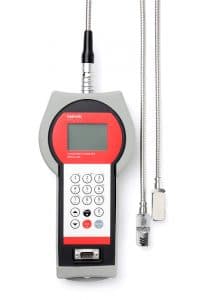
as pump performance verification.
Clamp-on flowmeters are available in both fixed and portable forms, portable versions providing opportunities for temporary process monitoring, for example to verify pump performance, allowing service and maintenance to become predictive. To take a specific instance, a factory may have a regular maintenance schedule for a series of pumps. Some of those pumps will have run for many hours, others for far less, and the wear on the pumps may have been affected by the process conditions when they were on duty. With a simple clamp-on measurement, actual pump performance compared to expected throughput can be determined directly, so maintenance priorities can be decided on the basis of actual repair and service requirements rather than time.
An increasingly important application measures heat flow, either on a factory-wide basis or within specific areas. Higher specification clamp-on flowmeters are able to accept a second pair of transducers, along with a pair of temperature sensors. Flow and temperature measurements can therefore be integrated to directly measure heat flow. By comparing heat flow ‘in’ with heat flow ‘out’, energy usage can be directly measured, logged and tracked, either on a fixed basis or as an investigative tool to identify opportunities for energy savings.
Clamp-on, non-invasive ultrasonic flowmeters are clean, easy to install and use, and versatile. The rise of the distributed factory made possible by Industrie 4.0 and Industrial Internet of Things (IIoT) technologies, the increased demands of continuous over batch production and the drive to reduce product returns in a high-value environment such as pharmaceuticals means that process measurement that can be easily incorporated into an existing process is becoming more and more essential. The clamp-on flowmeter is set to be an important part of that growth.



